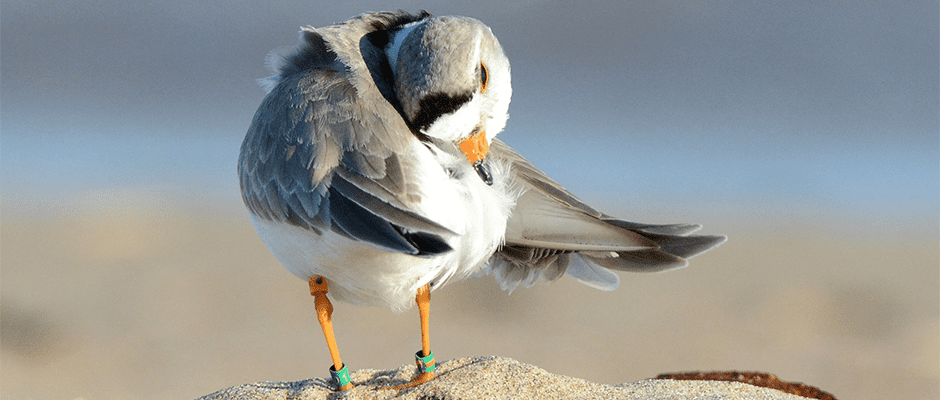Share this article
Predators can halt plover population success in Great Lakes
While piping plovers (Charadrius melodus) in the Great Lakes region have increased from 12 breeding pairs in 1990 to 76 breeding pairs — a sixfold increase in 28 years — researchers say rising merlin (Falco columbarius) populations, the plover’s biggest predator, may hinder their success.
The piping plover was listed as endangered in the Great Lakes region since 1986. For much of the time since then, researchers have collected data on the birds at breeding sites throughout the Great Lakes region, including Sleeping Bear Dunes National Lakeshore. But the datasets they collected were primarily used independently of each other, according to lead author of the study Sarah Saunders, a postdoctoral research associate at Michigan State University.
“One of the innovative parts of this paper was that we integrated them all into one model together for a better understanding of how the population is doing,” she said.
In the study published in the Journal of Applied Ecology, Saunders and her colleagues compiled information from three datasets — census data, nest monitoring of chicks and bird-banding data. Based on this information, they predicted that in 10 years, the plovers would increase to 91 breeding pairs on average.
But there was a catch. That estimate didn’t take into account the growing numbers of their major predator, the merlin, a raptor that preys on adult plovers. “Merlins are doing really well in the region,” Saunders said, possibly due in part to the banning of the pesticide DDT in the 1970s. “Their populations have exploded over the past two decades.”
Adding merlins to their model, the researchers found that predation would decrease plover breeding numbers down to 67 pairs in the next 10 years — 9 fewer pairs than their current population size.
Saunders and her colleagues then looked at the success of different management scenarios. They found that a combination of controlling merlins and employing chick predator control was the best management scenario. But if managers only have enough conservation dollars for one management effort, Saunders suggests increasing current merlin control measures, which appeared to be more effective at improving population viability than chick predator control alone.
“If we’re able to compensate for a predicted increase in their main predator, then we can go a long way to helping this population recover,” Saunders said.
The recovery goal for delisting the piping plovers is 150 pairs, Saunders said, which means they are only halfway there. “But if we really focus on improving juvenile survival and adult survival, it’s feasible we could achieve that goal in the near future.”
Header Image: A piping plover stands on the shore of Lake Huron. Recent research shows increased merlin management is needed to ensure the continued success of piping plovers in the region. ©Jim Hudgins/USFWS








